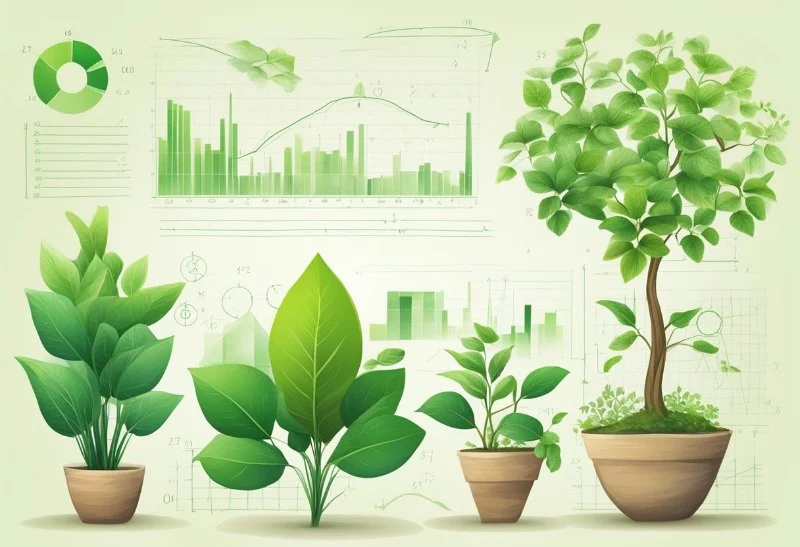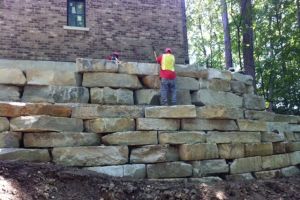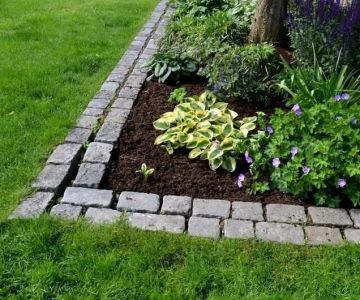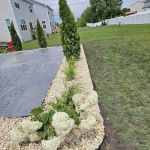
- -how-to-predict-plant-growth-and-spread-in-5-years-#how-to-predict-plant-growth-and-spread-in-5-years
- -predicting-plant-growth-#predicting-plant-growth
- -plant-growth-spread-#plant-growth-spread
- -5-year-plant-prediction-#5-year-plant-prediction
- -how-to-predict-plant-spread-#how-to-predict-plant-spread
1. How to Predict Plant Growth and Spread in 5 Years
Predicting plant growth and spread over the course of five years can be a challenging yet rewarding task for any gardener or landscape professional. Understanding how plants grow and spread allows you to better plan for future landscaping, prevent unwanted overgrowth, and ensure that your garden remains healthy and well-maintained. In this article, we'll explore the factors that affect plant growth and spread, and how you can predict what will happen to your plants over the next five years.

Lockhart's Landscaping & Maintenance, Inc.
2740 Beverly Dr suite e, Aurora, IL 60502, USA
2. Factors that Influence Plant Growth and Spread
Before predicting how plants will grow and spread, it's essential to understand the key factors that affect plant development. These factors include environmental conditions, soil quality, plant species, and care practices. Let's dive deeper into each of these components to understand their influence on plant growth.

Suburban Landscaping
Chicago HeightsCook CountyIllinois
1604 East End Ave, Chicago Heights, IL 60411, USA
2.1 Environmental Conditions
Plants are highly sensitive to their environment, and external factors such as climate, temperature, and moisture levels play a crucial role in their growth. For example, plants in cooler climates may grow more slowly than those in warmer regions. Similarly, plants in areas with regular rainfall will likely spread more rapidly compared to those in dry conditions. Understanding your local environment and the specific needs of each plant species is key to predicting how it will grow.
2.2 Soil Quality
The soil in which a plant is grown influences its ability to grow and spread. Healthy, well-drained soil with adequate nutrients promotes robust growth, while poor or compacted soil can stunt plant development. Over time, soil quality can change due to factors such as erosion, compaction, or the buildup of organic matter. Regularly testing your soil and adjusting its composition can help you predict how plants will perform in the long term.
2.3 Plant Species and Growth Habits
Each plant species has its own unique growth habit and spread pattern. Some plants, like groundcovers or grasses, spread aggressively, while others, such as trees, grow slowly but steadily. Understanding the growth habits of the plants in your garden will help you predict how much space they will require and whether they will need to be thinned out over time. You can also factor in the potential for invasive behavior, especially in the case of fast-growing plants.
2.4 Care Practices
The care you provide for your plants, such as watering, fertilizing, and pruning, can significantly affect their growth trajectory. Overwatering or underwatering can stunt growth, while proper fertilization can boost it. Pruning helps shape the plant and encourages healthy spread. Regular maintenance can ensure that your plants grow according to your expectations, and knowing how to adjust care practices is key to predicting their long-term behavior.
3. Techniques for Predicting Plant Growth and Spread
Once you have a basic understanding of the factors influencing plant growth, the next step is to apply that knowledge to predict future plant spread. Here are some effective techniques to help you predict how plants will grow and spread over the next five years.
3.1 Research Plant Growth Patterns
One of the most effective ways to predict plant growth and spread is to research the specific species you’re working with. Most plants have well-documented growth habits, which include their expected size, spread, and potential for invasive behavior. You can find this information in gardening books, plant catalogs, and online resources. Look for data on how the plant grows in different climates and soil types, as well as its growth rate over time.
3.2 Use Growth Charts and Diagrams
Many gardening resources and plant nurseries offer growth charts and diagrams that illustrate the expected spread and size of plants over time. These charts can help you visualize the plant's potential growth over the next five years. For example, a shrub that grows 3 feet tall in its first year might eventually reach 10 feet in five years. By consulting these charts, you can estimate the overall size and shape of the plant in the future.
3.3 Monitor Growth Regularly
To predict how a plant will grow in the future, it’s important to track its current progress. Regularly measure the plant’s height, width, and spread to monitor changes over time. This will give you a sense of how quickly it’s growing and whether its growth pattern is in line with expectations. You can also take note of any changes in the plant’s health, which could indicate stress or a need for adjustments in care practices.
3.4 Use Plant Spacing Guidelines
When planting new plants, refer to plant spacing guidelines to ensure that each plant has enough room to grow without overcrowding. These guidelines can also help you predict how much space the plant will occupy in five years. For example, a perennial might need 18 inches of space between each plant at first, but after five years, it could need up to 3 feet of space as it matures and spreads. Planning ahead with proper spacing ensures that your plants have enough room to grow without competing for resources.
4. How to Make a 5-Year Plant Growth Prediction
Now that we’ve covered the key factors and techniques for predicting plant growth, it’s time to make an actual prediction for your garden. Here’s a step-by-step approach to predicting plant growth and spread over the next five years.
4.1 Step 1: Choose the Plants You Want to Track
Begin by selecting the plants in your garden that you want to track over the next five years. This could include new plants you’re introducing or established plants that you want to monitor for changes. For each plant, take note of its current size, health, and any specific growth characteristics.
4.2 Step 2: Gather Growth Information
For each plant, gather as much information as possible about its growth habits, expected size, and spread. Use resources like plant databases, gardening books, or consultations with local horticulturists. You may also want to consult online forums and gardening communities for advice on plant growth in your specific region.
4.3 Step 3: Estimate Future Size and Spread
Based on the growth information you’ve gathered, estimate how much your plants will grow in five years. Consider the growth rate, expected spread, and the environment in which they are planted. Remember, growth can vary depending on the care you provide, so be sure to factor in your maintenance practices.
4.4 Step 4: Monitor and Adjust
As the years progress, continue to monitor your plants’ growth and make any necessary adjustments to care practices. If a plant is growing faster than expected, you may need to prune or provide more space. Conversely, if it’s growing slower than anticipated, you might need to adjust watering, fertilization, or soil conditions.
5. Tips for Predicting Plant Spread
In addition to predicting growth, it’s important to consider how plants will spread over time. Here are some tips for predicting plant spread:
5.1 Consider Root Systems
Plants spread not only through their foliage but also through their root systems. Some plants have aggressive root systems that allow them to spread quickly, while others have more contained root systems. Understanding the root structure of your plants is essential to predicting their spread.
5.2 Look for Invasive Species
Some plants have the potential to spread uncontrollably, especially if they’re not kept in check. Invasive species can quickly take over a garden and crowd out other plants. Be aware of plants in your garden that may have invasive tendencies and take steps to control their spread, such as regular pruning or containment strategies.
If you need expert advice on selecting the right plants for your space, visit Beautiful Landscapes, where you can find the best products, plants, and landscaping solutions for your home and garden.







 Cortez and Acevedo Landscaping and Tree Services5.0 (3 reviews)
Cortez and Acevedo Landscaping and Tree Services5.0 (3 reviews) Hernandez Lawn care LLC5.0 (3 reviews)
Hernandez Lawn care LLC5.0 (3 reviews) Signature Homes By WG Inc.5.0 (18 reviews)
Signature Homes By WG Inc.5.0 (18 reviews) Fresh Cut Pros, Inc4.0 (135 reviews)
Fresh Cut Pros, Inc4.0 (135 reviews) Peoria Brick Company - East Peoria4.0 (29 reviews)
Peoria Brick Company - East Peoria4.0 (29 reviews) Double A Supply4.0 (26 reviews)
Double A Supply4.0 (26 reviews) How to Create a Butterfly Pathway Through Your Garden: A Step-by-Step Guide
How to Create a Butterfly Pathway Through Your Garden: A Step-by-Step Guide How to Plant Shrubs for Continuous Bloom – Tips for Year-Round Garden Beauty
How to Plant Shrubs for Continuous Bloom – Tips for Year-Round Garden Beauty How to Plant for Delayed Blooming to Extend Season
How to Plant for Delayed Blooming to Extend Season How to Landscape for Seasonal Wildlife Attraction in Your Garden
How to Landscape for Seasonal Wildlife Attraction in Your Garden How to Maintain Stone and Brick Pathways Effectively
How to Maintain Stone and Brick Pathways Effectively How to Landscape a Rooftop Garden for Relaxation | Beautiful Rooftop Designs
How to Landscape a Rooftop Garden for Relaxation | Beautiful Rooftop Designs